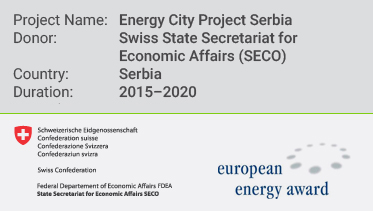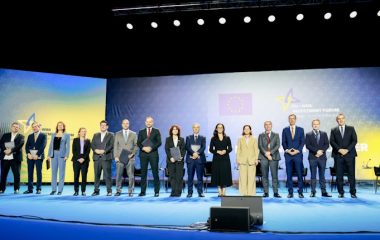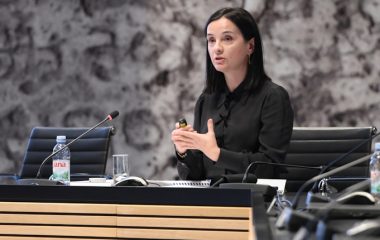
- Donor: Swiss State Secretariat for Economic Affairs (SECO)
- Country of implementation: Serbia
- Program Manager: Priska Depnering – Nydegger
- Project status: approved at SECO, partner project agreements to be signed, project implementation from 2016
- Partners: Ministry of Energy and Mining, Government Office for Reconstruction and Flood Relief, Municipality of Vrbas, Municipality of Paraćin, City of Uzice, City of Kruševac
Energy City Project Serbia follows the Swiss Cooperation Strategy 2014-2017 with Serbia which, under its priority domain Energy Efficiency and Renewable Energy, defines: “Switzerland will start building the capacities of selected towns and municipalities to implement sustainable energy action planning in order to reduce their energy consumption and meet energy targets.” This project is the first of its kind in Serbia and, if successful, could at a later stage be expanded to other cities. Similar projects are being implemented by SECO in the Ukraine, and being planned in Tunisia.
The project will support four selected municipalities in the implementation of good energy management practice, by introducing the European Energy Award (EEA) system to Serbia, which will at the same time facilitate implementation of the national requirements in the energy domain.
OVERALL GOAL
The objectives of this project are a more sustainable energy management at the municipal level through the introduction of the European Energy Award, and improved energy efficiency of public buildings (mostly schools) in Kruševac, Paraćin, Užice and Vrbas. In the case of the cities of Paraćin and Užice, investment measures in disaster risk reduction will increase the resilience in regards to floods in relation to the pledge made to Serbia after the 2014 floods in the region.
Capacity building will support the implementation of the identified infrastructure priority interventions and ensure the sustainability of the project. The component foresees a series of trainings, which will raise awareness, know-how and capabilities of the local teams taking care for the implementation of the project.
 Picture 1: Consultants visiting school during feasibility study phase of the project
Picture 1: Consultants visiting school during feasibility study phase of the project
 Picture 2: Consultants visiting school during feasibility study phase of the project
Picture 2: Consultants visiting school during feasibility study phase of the project
BENEFICIRIES
The direct beneficiaries are Serbian municipalities Kruševac, Paraćin, Užice and Vrbas with a total of about 300,000 inhabitants, and more specifically, it’s the energy staff of local self-governments, the pupils and teaching staff of schools and kindergartens.
 Vidoje Drndarević, Deputy Mayor of the city of Užice:
Vidoje Drndarević, Deputy Mayor of the city of Užice:
„We are glad that the city of Užice has been chosen to participate in the project „Energy Cities“ among 45 municipalities and cities across Serbia. Through the implementation of „European Energy Award“ component and capacity building component, concept of sustainable energy management system will be introduced in our local self-governance. Through the implementation of infrastructural component, substantial savings will be achieved in energy consumption within the public buildings to be reconstructed. Money saved may be used for energy efficiency improvements in the public buildings that have not been chosen for reconstruction within this project“.
Dragi Nestorović, Mayor of Kruševac:
„Participation in the project will contribute to establishing energy management system,
keeping record of energy consumption in public buildings and implementation of Energy
efficiency program of the city of Krusevac (2015-2018) through implementation of energy
consumption reduction with a purpose of achieving savings in the city budget“.
 Picture 3: Psychiatry Ward in General Hospital Užice to be reconstructed within the project
Picture 3: Psychiatry Ward in General Hospital Užice to be reconstructed within the project
 Table 1: Overview of the components of the Energy City Project
Table 1: Overview of the components of the Energy City Project
1. European Energy Award
Equivalent to Energiestadt (‘Energy City’) in Switzerland, it is awarded to municipalities which exemplify and implement a sustainable communal energy policy. Energiestadt, originally a Swiss approach and deeply linked to the country’s expertise and know-how, is a certification system for sustainable management in municipalities. Implementation of the related controlling process favours optimal allocation of resources to energy relevant projects. Therefore, ‘energy cities’ advocate renewable energy sources, environmentally friendly transport systems and efficient use of resources. The actions are implemented during a sustainable, long-term effective process with the goal of a continuous improvement. Up to now, EEA was successfully implemented in more than 1,300 municipalities in 11 countries.
EEA translates national goals related to energy effectively into local policy recommendations. These provide guidance for municipalities in allocating their resources to achieve optimum efficiency to implement energy and climate protection policies. In the case of Serbia, EEA will be suitable to support the municipalities in implementing the new Serbian law on energy efficiency.
2. Energy efficiency investment
The component will finance rehabilitation measures in ca.25 public buildings (preschools, kindergartens and elementary schools, as well as a hospital building in Užice) in selected municipalities. The prioritization and selection of measures were set according to evaluation criteria: abatement cost for carbon dioxide, feasibility and visibility. Technical measures to be realized are manifold. They include insulation of walls, roofs and basement ceilings, replacement of windows, sun protection, insulation of heating pipes, different rehabilitation measures in boiler rooms, replacement of outdated boilers and rehabilitation of lighting systems through LED lighting. To the extent possible, it is foreseen to use biomass and particularly wood as alternative energy source to replace old fossil fired boilers.
3. Disaster risk reduction investment
The project will also implement DRR measures in the municipalities of Paraćin and Užice – both hit hard by last year’s floods. In Užice, the project envisages installation of an early warning system, while in Paraćin it will support a number of measures which will be precisely defined in the initial phase of the project.
4. Capacity building
Technical assistance focuses on building management capacity at the institutional level in relevant departments of the municipality (flood prevention and energy). The capacity building component foresees a series of trainings for the municipal staff, the facility managers and also for the teachers in schools that are to be rehabilitated. The implementation of the capacity building program will raise awareness, know-how and capabilities of the local teams taking care of investment activities.











